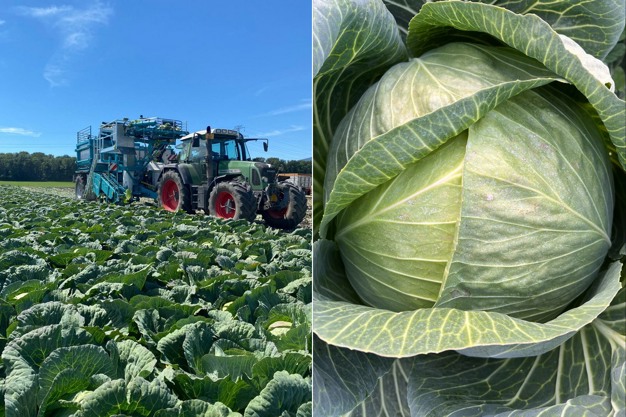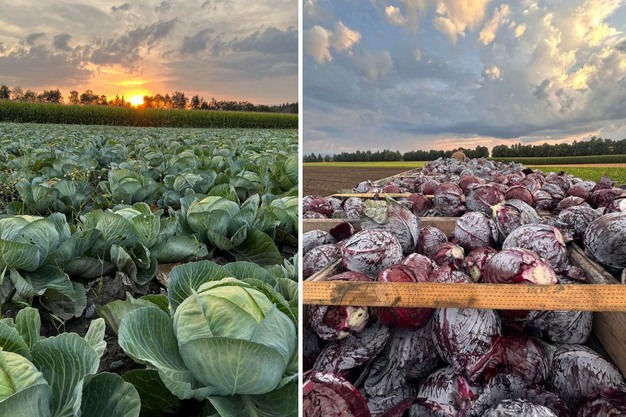The new sauerkraut season in Switzerland has got off to a particularly good start this year, reports David Dreyer from the company of the same name in Gerolfingen (Kanton Bern). "Quantities and qualities have been very satisfactory so far, and marketing is also going well. We have already seen an increase in demand since mid-September, which is definitely due to the slightly cooler weather." The first new harvest batches were already processed into sauerkraut in the first week of August, but the yields per hectare in late summer were a third lower than they are now, continues Dreyer.
The supply of regional white cabbage was stable last year. "We had neither shortages nor surpluses, so the quantities from last year's harvest were almost used up by the start of the new harvest. In this respect, we were almost on point in terms of the seasonal transition," says Dreyer, who supplies the catering trade and food retail markets throughout Switzerland, among others.
 © Dreyer AG
© Dreyer AG
High demand for local sauerkraut
Demand for regional sauerkraut has been at a stable, high level for several years. "The coronavirus year 2020 was, of course, a major upward spike, but this gradually levelled off to a normal level in the years that followed. Nevertheless, sales are still above the pre-coronavirus level. As a result of immigration in Switzerland, the population has grown significantly in recent years, which in turn has had a positive impact on sales and consumption of sauerkraut." Another driver of sauerkraut sales is inflation. "In times of crisis, sauerkraut traditionally attracts more attention, as it is still an affordable product in the end. There has been a marginal price increase compared to the previous year, which was necessary given the cost pressure."
However, it is above all the classics, i.e. wine and raw sauerkraut, that continue to be popular with Swiss consumers. Dreyer: "The same applies to red cabbage, which is often prepared as a side dish with game dishes, especially during the cold season. Sales of sour turnips, on the other hand, have been in sharp decline for several years, which is also because the product is no longer listed at all or only at a limited capacity at several retailers. Delicatessen sauerkraut, which we introduced to the market a few years ago, has established itself as a stable niche product in the barbecue sector."

Sauerkraut industry sets course for the future
Most of the raw materials required for sauerkraut processing are sourced from the Bernese Seeland. The family business has been working successfully with some producers for decades. Despite the high risks involved in outdoor cultivation, the trend in production is quite positive. "The cultivation volume has recently increased slightly again, which is mainly due to the expansion of the area. The number of contract growers has also been fairly stable for several years: one or two of them retire for reasons of age, and their acreage is then divided up within the producer group." Meanwhile, they are not afraid to make major investments: "My largest producer recently invested a six-figure sum in state-of-the-art harvesting technology," concludes Dreyer.
Photo credit: Dreyer AG
For more information:
David Dreyer
Dreyer AG
Frenschenbergstrasse 7
CH-2575 Gerolfingen
Tel: +41 32 396 00 00
[email protected]
www.dreyer-ag.ch










